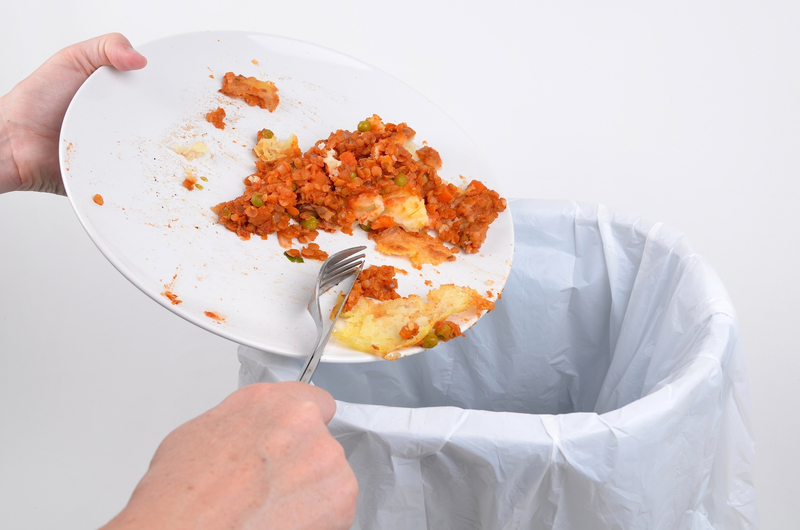Can Society Unite to Eradicate Microplastic Pollution?
Microplastic pollution is an escalating global issue, infiltrating ecosystems, endangering wildlife, and potentially threatening human health. As plastic production and consumption continue to rise, the challenge of dealing with microscopic plastic particles becomes even more complex. This raises the fundamental question: Can society truly unite to eradicate microplastic pollution, or are we destined to only mitigate its impacts? Let's explore the roots of the problem, the consequences, and the unified actions society can take to move towards a microplastic-free future.

What are Microplastics and Why Should We Care?
Microplastics are small plastic pieces less than 5mm in diameter. These tiny particles are often invisible to the naked eye, yet their effects are far-reaching. Originating from larger plastic debris, synthetic fibers, and even personal care products, microplastic contamination permeates air, water, soil, and food.
Major Sources of Microplastic Pollution
- Primary Microplastics: Intentionally manufactured small plastics, such as microbeads in cosmetics and industrial abrasives.
- Secondary Microplastics: Resulting from the breakdown of larger plastic items (like bottles and bags) due to environmental processes like UV radiation and abrasion.
- Synthetic Fibers: Released from textiles during washing, entering wastewater.
- Tire Wear: Particles from tire erosion accumulating in the environment.
- Paints and Industrial Processes: Flakes from road markings, marine coatings, and other sources.
These particles then make their way into rivers, oceans, and even our drinking water, entering the food chain in the process. Studies indicate that we may unknowingly consume thousands of microplastic particles each year.
The Environmental and Health Impacts of Microplastics
Understanding the dangers of microplastic contamination is fundamental to realizing the need for strong, collective action:
- Wildlife Threats: Many aquatic and terrestrial species ingest microplastics, leading to physical harm, chemical intoxication, and even death.
- Ecosystem Disruption: Microplastics can transport harmful chemicals and invasive species, disrupting delicate ecological balances.
- Human Health Concerns: While research is ongoing, microplastics have been detected in drinking water, table salt, and seafood. Concerns abound regarding the accumulation of plastics and associated toxins in the human body.
- Economic Losses: The cost of cleaning up plastic pollution, damage to tourism, fishing, and other industries is staggering and growing.
Given the severe consequences, the need to eradicate microplastic pollution is undeniable. But can society truly unite to address this challenge?
Society's Role in Tackling Microplastic Pollution
The Power of Collective Action
Uniting society is not only possible, but essential, for eliminating microplastic pollution. While individual actions matter, only coordinated efforts on a global scale can address the depth and complexity of the crisis. This involves governments, industries, communities, scientists, and individuals working in synchrony.
- Government Policy and Regulation: Governments worldwide have the unique power to implement bans, standards, and incentives that drive systemic change. Examples include EU legislation banning microbeads, and policy initiatives targeting single-use plastics.
- Industry Responsibility: Corporations play a crucial role by innovating in eco-friendly product design, reducing plastic reliance, and investing in alternatives. Extended Producer Responsibility (EPR) is a successful approach requiring producers to manage the afterlife of their products.
- Scientific Research & Innovation: Investment in research to better understand, detect, and remove microplastics from the environment is integral to effective interventions.
- Community Engagement: Grassroots initiatives, education campaigns, and volunteer cleanup efforts all contribute to creating broad awareness and behavioral change.
- Individual Change: Everyday decisions, from choosing products without microplastics to reducing single-use plastic consumption, collectively have substantial impact.
Policy and Regulatory Frameworks
One of the most effective strategies to eradicate microplastic pollution is through robust policies. Several governments are already making progress:
- EU Microbead Ban: The European Union banned microbeads in cosmetics, some cleaning products, and personal care items.
- Global Plastic Treaty (in negotiation): The United Nations is exploring a binding global treaty to address plastic--and specifically microplastic--pollution.
- National Strategies: Countries like Canada, the UK, and India have introduced regulations to minimize microplastic pollution, from restricting certain additives in plastics to improving wastewater treatment standards.
Effective enforcement and regular updating of policies are crucial for long-term success, as the sources and science around microplastics continue to evolve.
Innovation: Technology's Role in Eliminating Microplastics
Advanced Wastewater Treatment
Standard water treatment plants are often unable to remove microplastics. Investment in advanced filtration technologies, such as membrane bioreactors and electrocoagulation, can dramatically cut the number of microplastics released into waterways.
Alternate Materials
Developing biodegradable and natural alternatives to conventional plastics is key. For example, bioplastics and seaweed-derived packaging offer promising solutions. However, their scalability, environmental impact, and commercial viability remain under scrutiny.
Microplastic Capture Technologies
- Innovative Filters: Washing machine filters that trap synthetic fibers before they reach wastewater systems are being implemented in some regions.
- Stormwater Systems: Deploying mesh and sedimentation systems in drains to capture particles before they reach larger water bodies.
- Ocean Cleanup Devices: From floating booms to robotic collectors, several projects aim to remove both large and microplastics from oceans and rivers.
Investment in research and scale-up of these technologies can help society reduce and eventually eradicate microplastic contamination.
Education, Advocacy, and Community Action
While technology and policy are critical, public awareness and engagement are equally important for lasting change.
Educating Consumers
Empowering people with knowledge about microplastics' sources, dangers, and how to reduce exposure is fundamental. Simple changes, such as opting for microplastic-free products, using natural fiber clothing, and participating in recycling programs, can collectively drive demand for better products and policies.
Community Cleanup Campaigns
- Beach and River Cleanups: These initiatives not only remove existing plastic waste but also serve as platforms for education and advocacy.
- Corporate Partnerships: Businesses partnering with nonprofits and municipalities can amplify the impact of cleanup and prevention campaigns.
Advocacy and Civic Engagement
Supporting laws that ban microplastics, holding companies accountable for pollution, and campaigning for extended producer responsibility all help keep the pressure on stakeholders to act in the public's interest.
Challenges to Uniting Against Microplastic Pollution
Despite widespread recognition, obstacles remain in the quest to eradicate microplastic pollution:
- Lack of Global Standards: While regional progress is notable, uneven regulations globally allow for pollution to continue unchecked in many areas.
- Limited Alternatives: Not all microplastic sources have practical or economical substitutes yet, particularly in developing economies.
- Economic Interests: The plastic industry generates significant revenue and employment, creating resistance to rapid change.
- Consumer Habits: Deep-seated reliance on plastics in everyday life requires sustained behavioral change.
- Scientific Uncertainty: Microplastics research is still emerging, and the full scope of their impact--especially on human health--is not fully known.
Case Studies: Societies Uniting to Combat Microplastic Pollution
- France's Textile Filter Law: Beginning in 2025, all new washing machines sold in France must have filters to capture synthetic microfiber pollution. This landmark move exemplifies how targeted regulation can drive tech adoption and industry compliance.
- Norway's National Action Plan: Norway's comprehensive approach includes bans, extended producer responsibility, industry collaboration, and education campaigns. The nation's focus on both prevention and cleanup offers a blueprint for others.
- Citizen Science Initiatives: Projects like the Microplastics Monitoring Project in the UK empower communities to track contamination and spur local action.

Can Society Really Eradicate Microplastic Pollution?
While eradicating microplastic pollution is an ambitious goal, it is within society's reach if tackled collaboratively and holistically. This requires:
- Global Agreements: Unified international policy frameworks to prevent loopholes.
- Innovation and Investment: Developing alternatives and scalable removal technologies.
- Behavioral Change: Collective will to reduce unnecessary plastic use and choose sustainable products.
- Persistent Education: Ongoing public engagement to keep the issue and its solutions in focus.
Sustainably resolving microplastic contamination is not a quick fix, but a shared journey. The active involvement of all of society, from the individual to the international, is critical.
Conclusion: The Path Forward to a Microplastic-Free World
Can society unite to eradicate microplastic pollution? The answer is a resounding, optimistic yes--provided we act collectively and persistently. By leveraging policy, innovation, industry accountability, community initiative, and individual action, humanity can not only mitigate but potentially eliminate the crisis of microplastic pollution.
Every effort matters. Governments setting stringent standards, industries designing sustainable alternatives, scientists enhancing our understanding and capacity to remove microplastics, and communities advocating for change all combine to form a powerful movement. Through unified and informed action, microplastic eradication is not merely a utopian vision but an achievable global mission. The time to act is now for a cleaner, healthier planet for all.